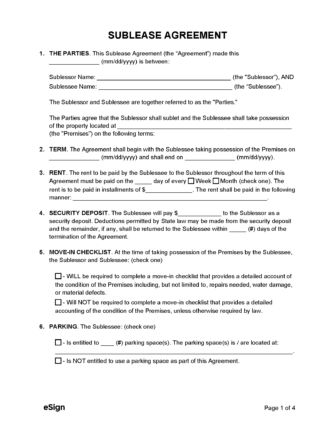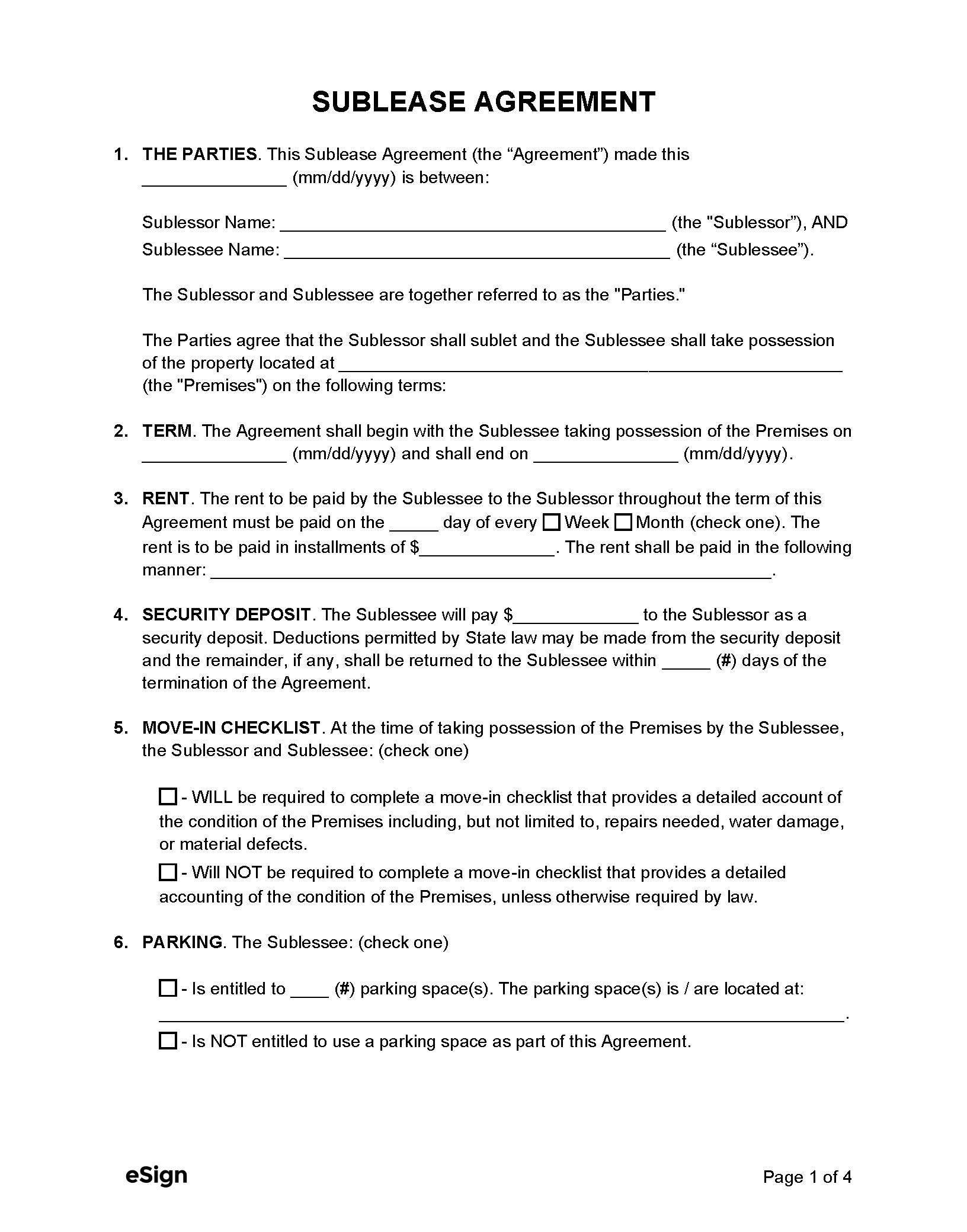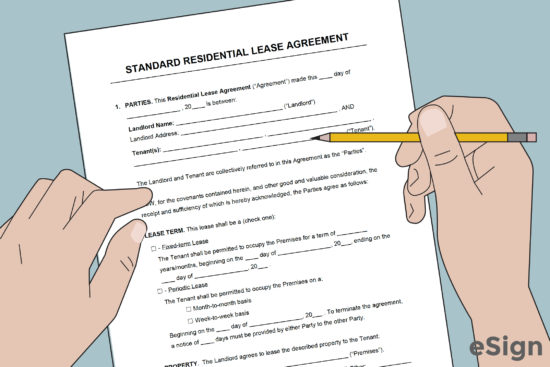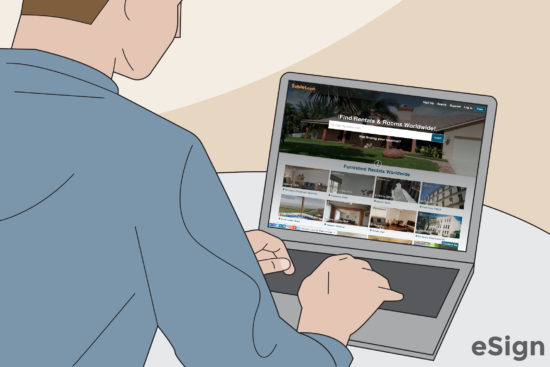By State
- Alabama
- Alaska
- Arizona
- Arkansas
- California
- Colorado
- Connecticut
- Delaware
- Florida
- Georgia
- Hawaii
- Idaho
- Illinois
- Indiana
- Iowa
- Kansas
- Kentucky
- Louisiana
- Maine
- Maryland
- Massachusetts
- Michigan
- Minnesota
- Mississippi
- Missouri
- Montana
- Nebraska
- Nevada
- New Hampshire
- New Jersey
- New Mexico
- New York
- North Carolina
- North Dakota
- Ohio
- Oklahoma
- Oregon
- Pennsylvania
- Rhode Island
- South Carolina
- South Dakota
- Tennessee
- Texas
- Utah
- Vermont
- Virginia
- Washington
- West Virginia
- Wisconsin
- Wyoming
How to Sublet an Apartment (4 steps)
1. Read the Original Lease
Whether or not a tenant can sublet depends on the language mentioned in their lease. Unfortunately, most agreements prohibit a tenant from being able to rent to a subtenant. Therefore, the tenant must obtain the landlord’s consent.
2. Finding a Subtenant
A tenant can use the following online formats to try and find a subtenant:
- Post on a rental platform – Tenants can use several online platforms to list their available rooms or units.
- Airbnb.com – Percentage-based (varies based on location)
- Sublet.com – Free (Premium costs $15-$50)
- SpareRoom.com – Free (upgrading costs $10.99 – $139)
- Craigslist.com – Free, except for NYC, Boston, & Chicago, which cost $5.
- LeaseBreak.com (NY specific) – Free
- Leverage social media – Post about the availability on Facebook, Twitter, LinkedIn, or another comparable platform.
- Utilize school resources – For college students, universities will have a central bulletin board that can be used for posting vacant units. Additionally, many schools have online platforms specifically designed for leasing to students. This is especially useful for those leaving on summer vacation and need a subtenant for two (2) to three (3) months.
3. Negotiate & Sign
Both parties will negotiate the sublease terms once a subtenant has been found and approved. The sublease agreement is not a mirror copy of the original lease agreement, although it will contain similar provisions.
The tenant should attach a copy of the original lease to ensure the subtenant understands their obligations to the landlord.
4. Subtenant Moves-In
After finalizing the agreement, the tenant will move out, and the subtenant will begin the move-in process upon the date stated in the form. After move-in, the subtenant must make regular rent payments to the tenant, not the landlord.
Sample
Download: PDF, MS Word (.docx), OpenDocument
SUBLEASE AGREEMENT
1. THE PARTIES. This Sublease Agreement (the “Agreement”) made this [MM/DD/YYYY] is between:
Sublessor: [SUBLESSOR NAME] (the “Sublessor”), AND
Sublessee: [SUBLESSEE NAME] (the “Sublessee”).
The Sublessor and Sublessee are together referred to as the “Parties.” The Parties agree that the Sublessor shall sublet and the Sublessee shall take possession of the property located at [PROPERTY ADDRESS] (the “Premises”) on the following terms:
2. TERM. This Agreement shall begin with the Sublessee taking possession of the Premises on [MM/DD/YYYY] and shall end on [MM/DD/YYYY].
3. RENT. The Sublessee shall pay the Sublessor rent in installments of $[AMOUNT]. The rent shall be due on the [#] of every month. The rent shall be paid in the following manner: [RENT PAYMENT INSTRUCTIONS].
4. SECURITY DEPOSIT. The Sublessee will pay $[AMOUNT] to the Sublessor as a security deposit. Deductions permitted by State law may be made from the security deposit, and the remainder, if any, shall be returned to the Sublessee within [#] days of the termination of this Agreement.
5. UTILITIES. The Sublessee is responsible for the following utilities: (check all that apply)
☐ – Electricity
☐ – Water
☐ – Heat
☐ – Trash Collection
☐ – Cable / Internet
☐ – Other: [OTHER UTILITIES (IF ANY)].
6. MASTER LEASE. This Agreement is subject to the lease agreement signed between the Sublessor and the Landlord, hereinafter referred to as the “Master Lease.” A copy of the Master Lease has been attached to this Agreement. The Sublessee agrees to assume all of the obligations and responsibilities of the Sublessor under the Master Lease for the duration of this Agreement. The Sublessee agrees that if the Master Lease is terminated for any reason, this Agreement will terminate as of the same date.
7. ORIGINAL COPIES. The Parties to this Agreement acknowledge the receipt of an executed copy thereof.
8. GOVERNING LAW. This Agreement shall be governed by the laws located in the State where the property
9. ADDITIONAL TERMS & CONDITIONS. [ENTER ANY ADDITIONAL TERMS AND CONDITIONS HERE (OPTIONAL)].
10. ENTIRE AGREEMENT. This Agreement contains the entire agreement of all parties on these matters, superseding any previous agreement between them.
11. SIGNATURES. In witness whereof, the Parties agree to the terms and have executed and dated this Agreement below.
Sublessor Signature: ____________________ Date: _________
Print Name: ____________________
Sublessee Signature: ____________________ Date: _________
Print Name: ____________________
Landlord Signature: ____________________ Date: _________
Print Name: ____________________





